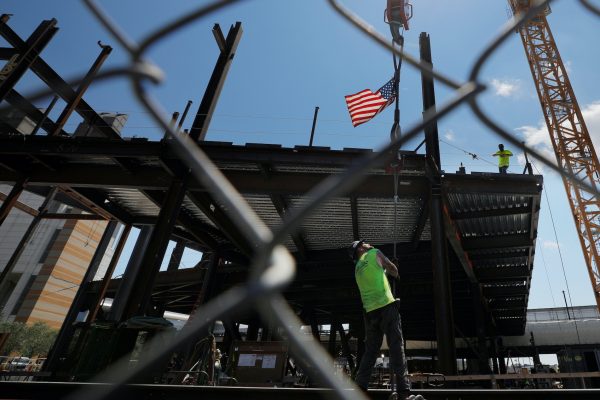By striking the right balance between accessibility and quality, the BDN would create a unique opportunity to narrow the infrastructure gap while also responding strategically to the BRI through coalition building.
In November 2019, Australia, Japan and the United States launched the BDN, a voluntary program that aims to certify infrastructure projects that would meet high standards of transparency, sustainability and developmental impact to help countries pursue quality infrastructure investments. Given that there is currently no certification process to assess quality infrastructure projects, the BDN could also be used by the Bretton Woods Institutions to evaluate existing projects, including those under the BRI.
The BDN is seen as a way to provide project finance alternatives to China’s BRI. One of the major differences often highlighted between the Bretton Woods Institutions and the BRI relates to the lower than optimal lending criteria of the BRI. Since Chinese government-owned banks have the backing of the state, BRI partner countries can receive loans even if the projects are not expected to be profitable.
Even before the COVID-19 pandemic, the World Bank estimated that nearly one-third of BRI partner countries were at high risk of debt distress. The low emphasis on environmental and social impact assessments by the BRI has meant the World Bank and other lending institutions have struggled to promote high-quality infrastructure projects. The BDN certification process must be a driver for projects with better commercial lending viability while still maintaining an openness that will invite a critical mass of private investment to guide quality infrastructure goals.
While the BDN has received US$2 million from the US State Department, no specific projects for certification have been announced. The undersea fibre optic cable to Palau has been the only project that has attracted financing from all three BDN countries, but it is unclear whether it will be a test case for receiving certification by the BDN.
The Center for Strategic and International Studies has pointed out that the United States does not have the appetite to compete on a dollar-to-dollar basis with the BRI, and it should instead focus on promoting rules that reflect US values. But efforts to promote ‘the highest standards’ have been criticised for only reflecting the values of developed countries. To avoid such criticism, the BDN will have to be implemented in a way that captures the characteristics and needs of recipient countries, rather than applying a one-size-fits-all standard.
Given that the BDN is expected to invite private investment, the emphasis on accountability might be more focused on the investors seeking a better rate of return than the people affected by the policy. It is imperative to see how the BDN will balance promoting high-quality infrastructure projects while also being accessible enough to shrink the infrastructure gap, which is projected to be about US$94 trillion over the next two decades.
There has been exponential growth in environmental, social and governance related assets in recent years, with approximately one-third of global assets in sustainable investments. Norway, the world’s largest sovereign wealth fund, recently released its plan to impose stricter ethical and environmental guidelines on its investments and stated that it would not be adding more emerging markets to its portfolio. While surveys show that a certification program for quality infrastructure projects would increase the likelihood of private sector participation in infrastructure projects, the standard-setting efforts will need to be structured in a way that promotes infrastructure projects in places of need as well.
These factors underscore the importance of standard creation through a multi-stakeholder mechanism. The OECD has been providing technical support by building a multi-stakeholder design process for the BDN certification framework. The aim is to build in sustainability as an objective both at the design and the implementation phases, signalling to the financial markets that the risks have been managed, which would make it more attractive for private sector investment.
While the OECD indicated that BDN certification would be based on existing criteria such as the G20 Principles for Quality Infrastructure Investment, the OECD stated that stakeholders from 96 countries have been engaged in finalising the BDN certification framework, including China as an observer. Given that the Biden administration has shown a keen interest in mobilising allies and like-minded countries for various standard-setting initiatives, the BDN is a great opportunity to showcase US commitment to multilateralism.
Even though BRI has been criticised for being poorly coordinated and too fragmented, the Trump and Biden administrations have perceived the BRI as a tool for achieving Beijing’s geopolitical goals. Countries, especially in Southeast Asia, have often shown their reluctance to align with either the United States or China, although some ASEAN members have expressed interest in pursuing financing opportunities with the trilateral partners.
The Biden administration needs to emphasise to developing countries that the BDN will be utilised for the common objective of achieving Sustainable Development Goals, rather than being perceived as another means to contain China.
John Taishu Pitt is a trade policy specialist at a law firm in Washington DC and a Fellow in the Institute of International Economic Law at the Georgetown University Law Center.

